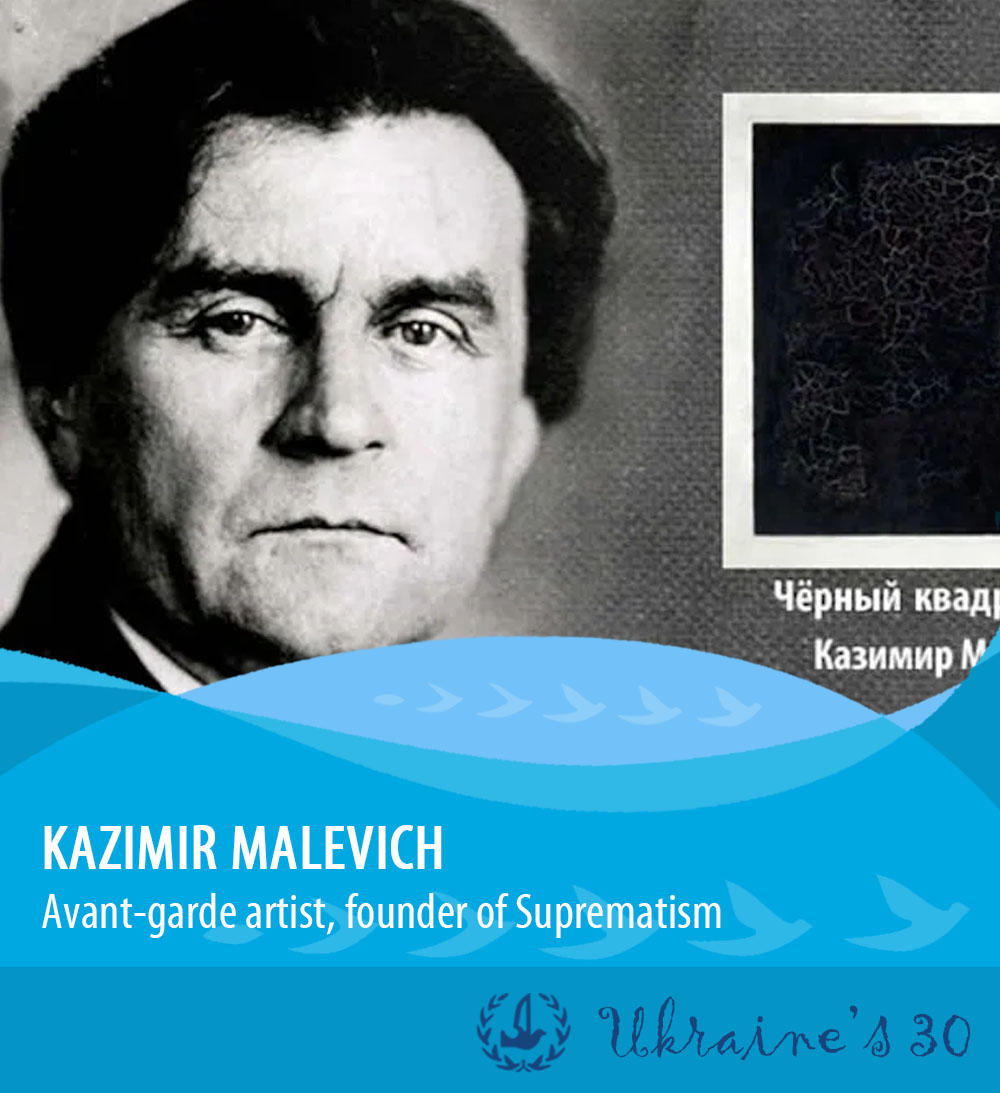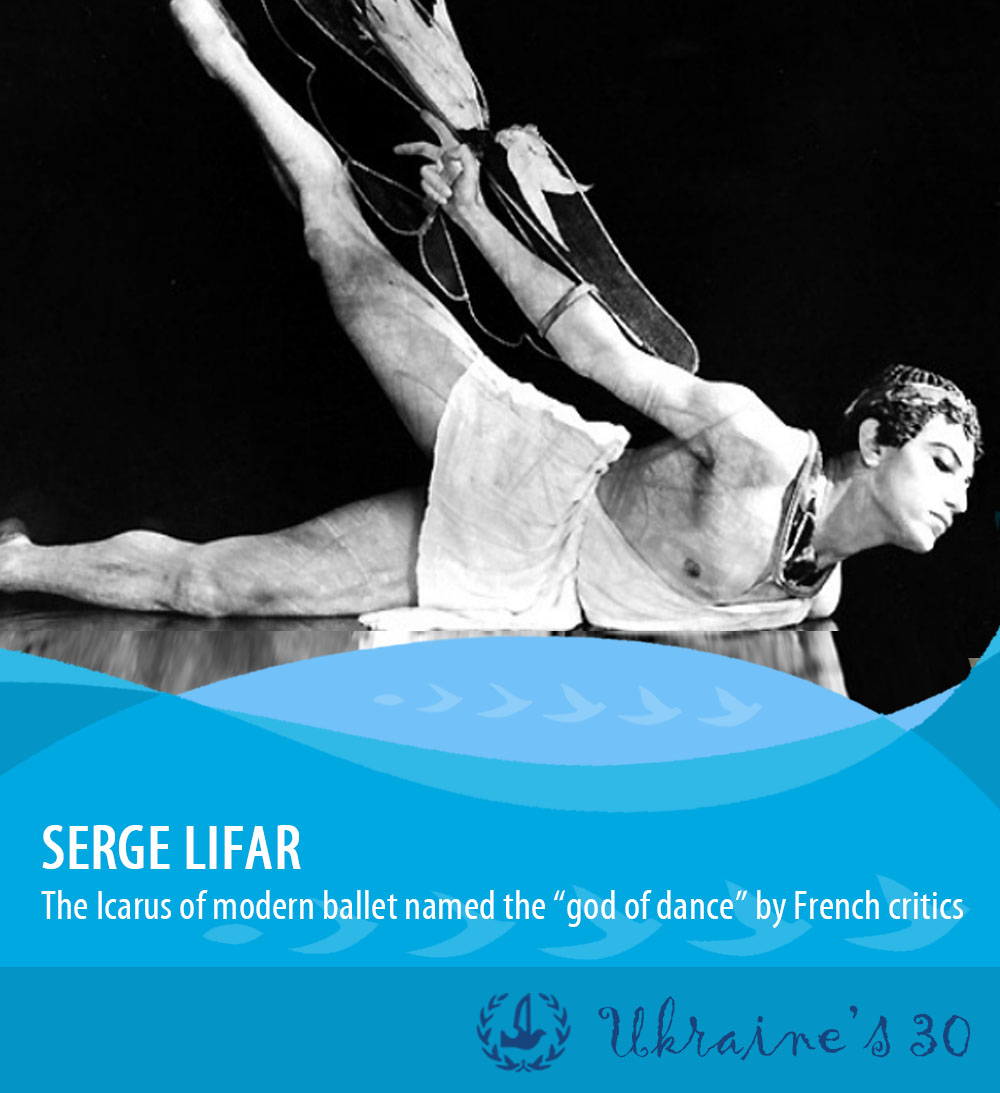On August 24, 2021, Ukrainians celebrate the 30th anniversary of the Independence of Ukraine, a landmark date in Ukraine’s nation-building journey.
On July 16, 1990, the new Ukrainian parliament adopted the Declaration of State Sovereignty of Ukraine, which established the principles of self-determination, democracy, independence, and the priority of Ukrainian law over Soviet law.
On December 1, 1991, Kyiv held a nation-wide referendum whereby over 90% of the population expressed support for the Act of Independence… and August 24 was officially adopted as Independence Day.
But, what is required for a country to become an independent state? One might argue the following points, but four main factors contribute to state-building: a people, a territory, a government, and the ability to conduct relations with other states on a sovereign basis. Ukraine has all of these, although some territories – Crimea and parts of Donetsk and Luhansk Oblasts – are currently occupied by Russia.
People are one of Ukraine’s most valuable assets, and today we focus on 30 prominent Ukrainians who, in one way or another, contributed to the transformation and development of Ukraine and the world in their relevant fields. You may argue that some were citizens of the Soviet Union, others left Ukraine and gained fame and fortune in another country. However, they have one thing in common – all were born, raised and educated in Ukraine and contributed at some point to changing the course of human history.
The list is not exhaustive, of course, and you may want to argue with our choices…
Today, we look at nine personalities of the art and cultural community.
Mariya Prymachenko: talented peasant woman who created a mystic cosmos
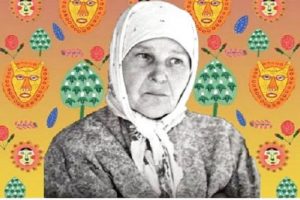
Mariya Prymachenko (1908-1997) was a modest, but immensely talented peasant woman from the village of Bolotnia, Kyiv Oblast. Stricken with polio from an early age, she turned to painting and writing. She had an unusually sensitive perception of reality and dedicated her life to creating incredible beauty and a fabulous world of mythological beasts that take their roots іn Ukrainian folk legends and fairy tales.
Mariya painted on simple paper with ordinary brushes, gouache and watercolours. Using vivid colours, starkly graphic contours and expressive rhythmical patterns, she created an unbelievable, wonderful and incomprehensible artistic cosmos.

“As a young girl, I was tending a gaggle of geese. One day I took them down to a sandy beach on the bank of the river. We crossed a field dotted with wild flowers. I sat down and began drawing real and imaginary flowers on the sand with a stick... Later, I decided to paint the walls of my house using natural pigments. After that, I never stopped sketching and painting.” she explains.
After visiting a Prymachenko exhibition in Paris, Pablo Picasso exclaimed: “I bow down before the artistic miracle of this brilliant Ukrainian woman.” Mariya Prymachenko is an Honoured Artist of Ukraine and a Laureate of the Taras Shevchenko Prize.
Kazimir Malevich: avant-garde artist, founder of Suprematism

Kazimir Malevich (1879-1935) was an avant-garde artist, a prominent figure of the Ukrainian avant-garde movement, founder of Suprematism, one of the initiators of Cubo-Futurism, art theorist, and author of the famous Black Square and White on White.
Although he spent many years in Moscow and Leningrad, the artistic hubs of the Soviet Union, Malevich declared himself a Ukrainian and wrote private letter and notes in Ukrainian. Born in Kyiv, he spent his youth in small Ukrainian towns and villages where his father worked for local sugar refineries. Malevich often underlined that his artistic vision was formed by Ukrainian crafts, traditional painting and ordinary household items, such as stoves, ceramic bowls, etc.
Malevich also depicted the Ukrainian countryside and the horrors of the 1033 Holodomor, which are reflected in his “peasant” series with faceless, often armless figures standing in listless rows and in his canvas Running Man
, a representation of the Soviet government, running away after the persecution and murder of Ukrainian peasants.
Solomiya Krushelnytska: Wagner’s diva of the 20th century
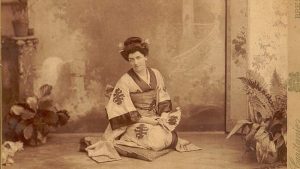
Solomiya Krushelnytska (1872-1952) was an outstanding opera singer, a charismatic and colourful woman who dominated world stages and entranced audiences with her soprano vocals. She emerged from a remote and impoverished village in Galicia (Halychyna) to conquer the stage in the Galician capital of Lviv and then went on to glory and glitter in the famous opera houses of Paris, Rome, Milan, Naples, New York, Cairo, etc.
In 1904, she literally “saved” Puccini’s Madame Butterfly from extinction. The opera was booed by the audience and widely criticized at its premiere in Milan’s La Scala, but three months later in Brescia, Krushelnytska was loudly acclaimed when she sang the leading role in a revised version of the work. A promoter of contemporary composers and especially Richard Wagner, Krushelnytska was awarded the title of “Wagner’s diva of the 20th century”. She had a phenomenal memory, spoke eight languages and could learn a part in a new opera in two days, and develop the character of a role in another three or four days. Her repertoire totalled 63 opera parts.
In August 1939, after the death of her Italian husband, Mariya Krushelnytska left Italy and returned to her home in Lviv. Caught in the winds of World War II, and then trapped behind the Iron Curtain, the world-renowned singer gave music lessons and taught singing in Lviv until the end of her life.
Oleksandr Archipenko: sculptor and artist of empty space

Oleksandr Archipenko (1887-1964) was a Ukrainian-American avant-garde artist and sculptor, one of the founders of Cubism in sculpture. He moved to Paris in 1908, and took up residence with other émigré Ukrainian artists in La Ruche, an artist’s colony in the Montparnasse district.
Archipenko was the first Ukrainian to take part in the Venice Biennale (1920) and started his own art school in Berlin. His name occupies a distinguished place among such masters of the 20th century as Matisse, Picasso, Braque, Leger and Malevych.
In 1923, Archipenko emigrated to the United States, where he worked as an artist, sculptor and decorator. In 1934, his artwork filled an entire room in the Ukrainian pavilion at the Century of Progress exhibition in Chicago. Archipenko scuptures are exhibited in leading museums.
Often referred to as the “architect of empty space”, Archipenko constantly sought out something new in sculpture.
“I’m an artist who set out on the path of experimentation. I’m neither a revolutionary nor a reactionary. I’m looking for something new in order to solve problems of plasticity dominant in this period and inspired by my feelings,” wrote Archipenko to Czech modernist artist Keige in 1933.
Mykola Lysenko: Father of modern Ukrainian classical music
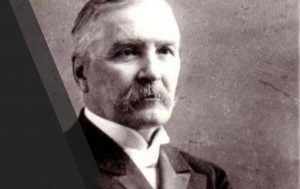
Mykola Lysenko (1842-1912) was a composer, ethnomusicologist, conductor, pianist, pedagogue, and community figure. The descendant of an aristocratic Cossack family, he acquired the rudiments of piano playing from his mother and gained a strong appreciation of Ukrainian music and Cossack lore from his grandparents. Lysenko’s role in Ukrainian music can be compared to that of Taras Shevchenko in Ukrainian literature.
Before World War I, Lysenko was at the centre of Ukrainian cultural life in Kyiv, where he established the Lysenko Music and Drama School in 1904 to promote the development of Ukrainian classical music.
A strong advocate of romantic nationalism, he laid the foundation for the further development and expansion of Ukrainian musical culture. He wrote in many genres: opera, symphony, choral, vocal and instrumental chamber music, attaching great importance to traditional folk songs. He composed ten operas, among them Christmas Night, Natalka Poltavka and Taras Bulba (a masterpiece of Ukrainian opera music), children’s operas such as Koza Dereza and Pan Kotskyi, the operetta Chornomortsi, etc. Lysenko was particularly fascinated by Shevchenko and composed a unique work called Music to the Kobzar, which includes approximately one hundred cantatas for choirs, ensembles and solo voices.
Often referred to as the “Father of modern Ukrainian classical music”
, Mykola Lysenko influenced many later generations of Ukrainian composers.
Mykola Leontovych: composer of world-famous Carol of the Bells

Mykola Leontovych (1877-1921) was a composer, choral conductor and pedagogue. His original spring song Shchedryk, widely known as Carol of the Bells, is sung at Christmas all over the world. Today, there are over 1,000 versions of this popular song.
During his lifetime, Leontovych wrote over 150 musical compositions – arrangements of folk songs, religious works, cantatas, and choral pieces set to the words of different Ukrainian poets. In 1917, with the creation of the Ukrainian National Republic (UNR), Leontovych left his native Podillya region and moved to Kyiv, where he created his first symphonic works and began writing the opera On Rusalka’s Easter. In 1918–1919, during the period of short-lived Ukrainian Independence, Leontovych was active in the revival of Ukrainian cultural life. He taught at the Mykola Lysenko Institute of Music and Drama, as well as the Kyiv Conservatory. He established a music school in Tulchyn, conducted amateur choirs, wrote textbooks on music pedagogy and methodology.
When the Bolsheviks came to power, he returned to the town of Tulchyn, where he founded a music school. Mykola Leontovych died tragically young. He was killed by a Chekist agent at his parents’ home on January 22, 1921.
A shy and self-crtitical man, Mykola Leontovych wanted his music to arouse the senses:
“I'm interested in which colours were used for high tones and which for low ones. I myself often think about that… how to combine sound and colour in my music”.
Serge Lifar: the Icarus of modern ballet named the “god of dance” by French critics
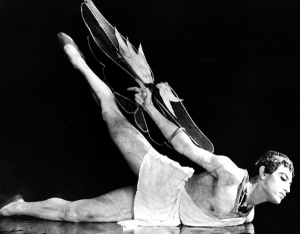
Serge Lifar (1905-1986) was a Ukrainian-French choreographer, writer, director, and one of the greatest male ballet dancers of the 20th century.
As a young man, Lifar studied under Bronislawa Nijinska at the Kyiv School of Movement. Fleeing the Soviet regime, he left Ukraine in 1921 to join Serge Diaghilev’s Ballets Russes in Paris, became premier danseur and created the title roles in a number of George Balanchine’s’s early ballets. He was a dramatic and athletic dancer who had a charismatic stage presence.
One of the most acclaimed dancers of the 20th century, Serge Lifar was called the “god of dance’ and the “genius of ballet” by French critics. Taking over the management of the Paris Opera ballet, Lifar revitalized dance and gave the Parisian ballet school new strength and purpose, staging more than 200 ballet performances. Lifar believed that dance was more important than the music and decor in a ballet. He first experimented with this controversial concept in the ballet Icare (1935), in which he performed the title role. The work was performed solely to a percussion accompaniment that was added after the choreography had been completed.
While bestowing the French Legion of Honour on Serge Lifar, Charles de Gaulle offered him French citizenship, but Lifar replied: “I’m Ukrainian and I’m proud of that!”
To honour the outstanding Ukrainian-born dancer, the Serge Lifar International Ballet Competition was first organized in Kyiv in 1994. It was suspended in 2014 during Euromaidan and due to Russia’s invasion of Crimea and the Donbas… and finally returned to the Ukrainian stage in April 2019.
Oleksandr Dovzhenko: film director whose Zemlya named one of the top 10 greatest films of all time by the International Film Critics Symposium
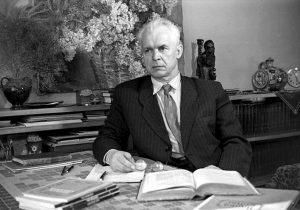
Oleksandr Dovzhenko (1894-1956) was an outstanding film director, producer, writer and artist.
In 1926, Dovzhenko worked as a film director at the Odesa Artistic Film Studio. In 1927, he began shooting his legendary trilogy - first came Zvenyhora
(1927), which draws on Ukrainian history and marks the beginning of Ukrainian national cinematography. Then came his expressionist film Arsenal (1929), devoted to the revolutionary events in Kyiv in 1918, and lastly his silent film, Zemlya (Earth, 1930), dealing with collectivization in Ukraine.
Zemlya has been praised as one of the greatest silent films ever made. It opens with a long close-up of an elderly, dying man taking intense pleasure in the taste of an apple - a scene with no obvious political message, but with much aesthetic nuance. The plot of the film revolves around the murder of a peasant leader by a Ukrainian landowner, who opposes Moscow’s plan to collectivize agriculture in the region. The hostility between the two camps was indeed reflective of current events in Ukraine at the time… though peasants were not very eager to turn their farms into kolkhozes.
The film was condemned by the Soviet authorities and Dovzhenko was severely criticized as a Ukrainian nationalist. He was forced to move to Moscow, where he lived in exile until his death.
From the beginning of World War II, Dovzhenko devoted more of his time to writing than directing. He wrote some short stories, mostly about Ukraine’s tragic fate during the war and a number of “film novels”: Ukraine in Flames, 1943, prohibited by Stalin because of its nationalism and fully published only in 1990 and 1995; The Tale of Fiery Years, 1945, and Poem about the Sea, 1956.
Oksana Lyniv: first woman conductor to open Bayreuth Opera Festival
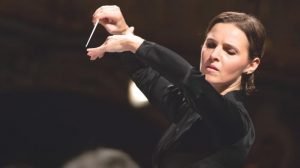
Oksana Lyniv (1978- ) is a world-famous conductor.
Raised in a musical family in Brody, Lviv Oblast, Lyniv studied flute and conducting at the Stanislav Liudkevych Music School in Lviv and first conducted an orchestra at the age of 16.
Oksana Lyniv was Chief Conductor of the Opera and Philharmonia Orchestra of Graz, Austria till 2020; she is the founder and art director of the LvivMozArt Festival in Lviv, and founder of the Youth Symphony Orchestra of Ukraine (YsOU).
She is guest conductor for such leading opera theatres of the world as the Royal Opera in Stockholm and the Liceu Opera in Barcelona and has worked with many European orchestras in Germany, Austria, Sweden, Czech Republic, Hungary, Spain, Estonia, Romania, and Switzerland.
One of her pet projects is to bring Ukrainian classical music to the world. She has introduced European audiences to such notable Ukrainian classics as Dmytro Bortnyansky, Bohdan Liatoshynsky, Mykola Skoryk, and such contemporaries as Yevhen Stankovych, Bohdana Frolyak, Yuriy Lanyuk and Liubava Sydorenko.
Her greatest achievement to date is leading the brilliant opening performance of Richard Wagner’s Flying Dutchman at the Bayreuth Opera Festival on July 24, 2021. The first woman to take the podium at this world-famous event, Oksana Lyniv was warmly applauded and cheered, with a standing ovation of 12 minutes.
When asked about attending an event conducted by a woman, German Chancellor Angela Merkel, a Wagner fan herself, gave a firm answer: “Finally!”
“The fact that I am a woman does not make the Flying Dutchman score any easier or harder. The fact that I, a woman, can stand at the podium here is perhaps a symbol of our time. Of course, I hope to set a positive example. That would be important not only for me personally, but also-if you want to take a lofty view - for the world and for the future.” said Lyniv in an interview.




